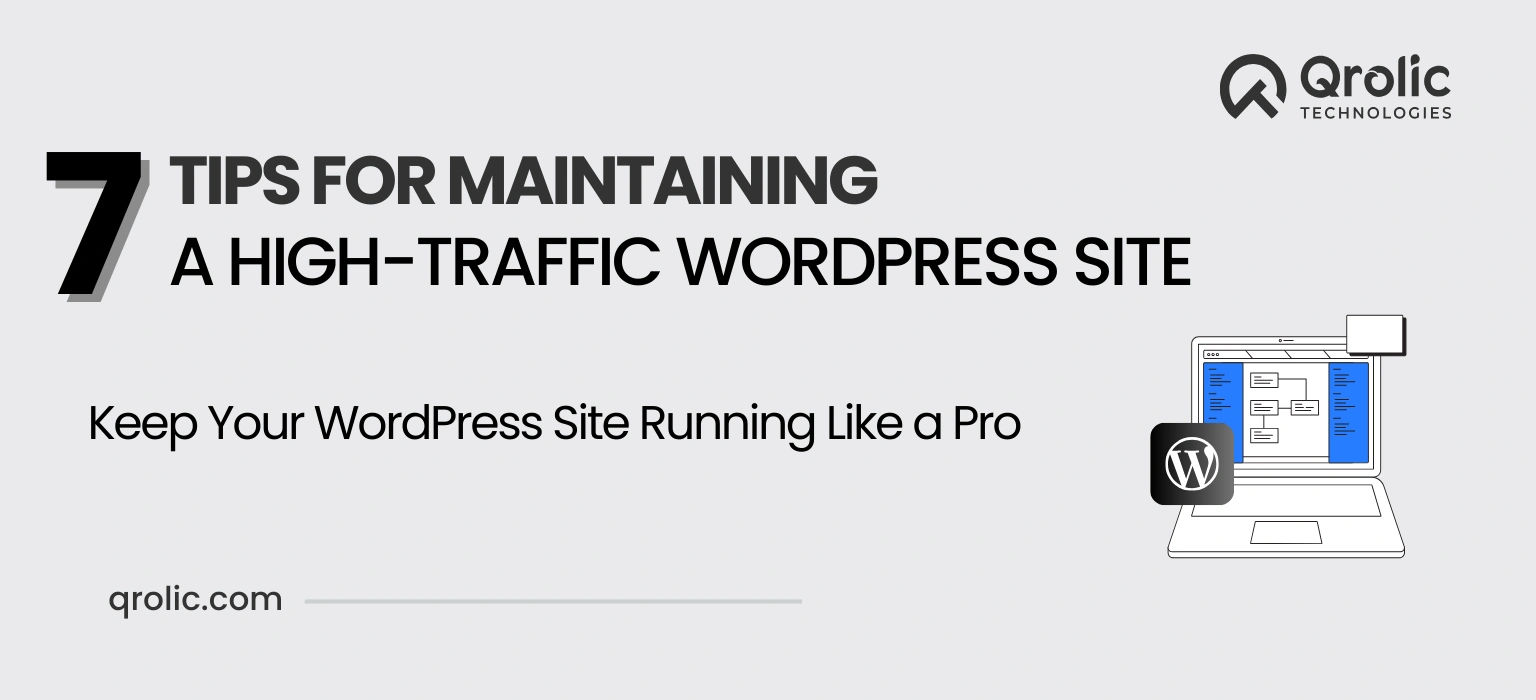Maintaining a high-traffic WordPress site can be both exciting and challenging. As your website grows, it attracts more visitors, which can lead to performance issues, security concerns, and a higher risk of downtime. To ensure a seamless user experience and continued success, it’s essential to keep your WordPress site in top shape.
In this article, we’ll explore the top 7 tips for maintaining a high-traffic WordPress site, so your users enjoy a fast, secure, and uninterrupted experience. Whether you’re a seasoned developer or a site owner looking to improve performance, these actionable insights will help.
Quick Summary:
- Choose reliable hosting for high traffic.
- Use a CDN and optimize with caching.
- Optimize images and use speed plugins.
- Keep everything updated and monitor performance.
Table of Contents
- 1. Use a Reliable Hosting Provider
- Types of Hosting for High-Traffic WordPress Sites:
- 2. Implement a Content Delivery Network (CDN)
- Why Use a CDN for High-Traffic Sites?
- 3. Optimize Website Speed with Caching
- Types of Caching to Implement:
- 4. Optimize Images and Media Files
- How to Optimize Images:
- 5. Regularly Update WordPress, Themes, and Plugins
- Why Updates Matter:
- 6. Use a WordPress Optimization Plugin
- Popular WordPress Optimization Plugins:
- 7. Monitor Site Performance and Traffic
- Tools to Monitor Your WordPress Site:
- Conclusion
1. Use a Reliable Hosting Provider
A fast, secure, and high-performance WordPress site begins with the right hosting provider. Shared hosting plans might seem affordable, but as your traffic increases, they can severely limit your site’s potential. A good hosting provider can handle traffic spikes and ensure your site runs smoothly.
Types of Hosting for High-Traffic WordPress Sites:
- VPS Hosting: Offers better resources and control than shared hosting.
- Dedicated Hosting: Provides exclusive server resources, ideal for very high-traffic sites.
- Managed WordPress Hosting: Optimized specifically for WordPress, it includes features like automatic updates, backups, and high-level security.
- Cloud Hosting: Scalable and reliable, allowing your site to grow without limitations.
Choosing the right host ensures your website can scale with traffic growth and provide a fast experience for all users.
Learn more about choosing the best hosting provider for WordPress
2. Implement a Content Delivery Network (CDN)
A Content Delivery Network (CDN) helps distribute your website’s static content (images, CSS, JavaScript, etc.) across multiple servers located worldwide. By doing so, the CDN ensures that users access your site from the nearest server, reducing page load times and minimizing latency.
Why Use a CDN for High-Traffic Sites?
- Improved speed: Content is served from the server closest to the user.
- Reliability: CDNs offer redundancy in case of server failure, reducing the chance of downtime.
- Reduced server load: Offloading traffic to the CDN can ease the burden on your main server.
Popular CDN providers include Cloudflare, KeyCDN, and MaxCDN, which offer easy integration with WordPress.
3. Optimize Website Speed with Caching
Website speed is critical, especially when handling high traffic. Caching is one of the best ways to speed up your WordPress site. When caching is enabled, your server stores static versions of your website’s pages, reducing the need to generate them dynamically with each visit.
Types of Caching to Implement:
- Browser Caching: Stores content locally in a user’s browser to speed up repeated visits.
- Page Caching: Saves a static version of the entire page to serve faster on subsequent visits.
- Object Caching: Stores database query results to avoid recalculating them every time.
- Opcode Caching: Reduces PHP execution time by caching precompiled code.
Popular caching plugins for WordPress include W3 Total Cache, WP Super Cache, and LiteSpeed Cache. Configuring caching can dramatically improve your site’s load time and performance.
Explore more about improving WordPress site speed
4. Optimize Images and Media Files
High-traffic websites typically have many media files like images, videos, and audio, which can slow down page load times. Optimizing these files is crucial to maintaining speed, especially when dealing with thousands of visitors.
How to Optimize Images:
- Compress images: Use image compression tools like TinyPNG or Smush to reduce file sizes without sacrificing quality.
- Serve images in next-gen formats: WebP images load faster than JPEGs or PNGs and are supported by most modern browsers.
- Lazy Loading: Implement lazy loading to load images only when they are about to be viewed by the user.
By optimizing your images and other media files, your website will load faster, even under heavy traffic.
5. Regularly Update WordPress, Themes, and Plugins
WordPress, themes, and plugins are frequently updated to introduce new features, security patches, and bug fixes. Keeping your WordPress site up to date is critical, particularly for high-traffic websites where any vulnerability can be exploited.
Why Updates Matter:
- Security patches: Keeping your site updated ensures that vulnerabilities are patched promptly.
- Improved performance: Updates often include performance improvements, which is crucial for a high-traffic site.
- Compatibility: Updates ensure that your themes and plugins work seamlessly with the latest WordPress version.
Pro Tip: Use Staging Environments to test updates before applying them to your live site. This helps you avoid any compatibility issues or downtime.
Read about the importance of performance optimizations
6. Use a WordPress Optimization Plugin
WordPress optimization plugins can simplify many tasks related to speed, SEO, security, and performance. These plugins can provide an all-in-one solution for high-traffic websites that need to stay fast and secure.
Popular WordPress Optimization Plugins:
- WP Rocket: Offers caching, database optimization, lazy loading, and more.
- Perfmatters: Optimizes WordPress performance by disabling unnecessary features and reducing page bloat.
- Autoptimize: Combines and minifies HTML, CSS, and JavaScript files for faster page loading.
By integrating optimization plugins into your site, you can automate many performance-enhancing tasks and ensure your website stays fast.
7. Monitor Site Performance and Traffic
Monitoring your site’s performance and traffic is essential to identify issues before they affect your users. Tools like Google Analytics provide insights into user behavior, but you’ll also need specialized tools to monitor server performance, uptime, and overall site health.
Tools to Monitor Your WordPress Site:
- Pingdom: Provides real-time monitoring and alerts for performance and downtime.
- Google PageSpeed Insights: Analyzes your site and offers recommendations for improving performance.
- GTmetrix: Offers detailed reports on site speed and recommendations for improvements.
By continuously monitoring your site’s performance, you can quickly detect slowdowns or traffic spikes and take action to resolve them before they impact your users.
Check out more tips for managing high-traffic WordPress sites
Conclusion
Maintaining a high-traffic WordPress site requires constant attention to performance, security, and user experience. By following the tips outlined in this article, you can ensure your site remains fast, secure, and available to users at all times. Remember, regular updates, optimized media, caching, and reliable hosting are essential for handling growing traffic and avoiding potential issues.
Whether you’re just starting to experience higher traffic or you’ve already hit significant numbers, implementing these strategies will help you maintain an efficient and successful WordPress site.
Have questions or need help optimizing your WordPress site? Contact us today!






